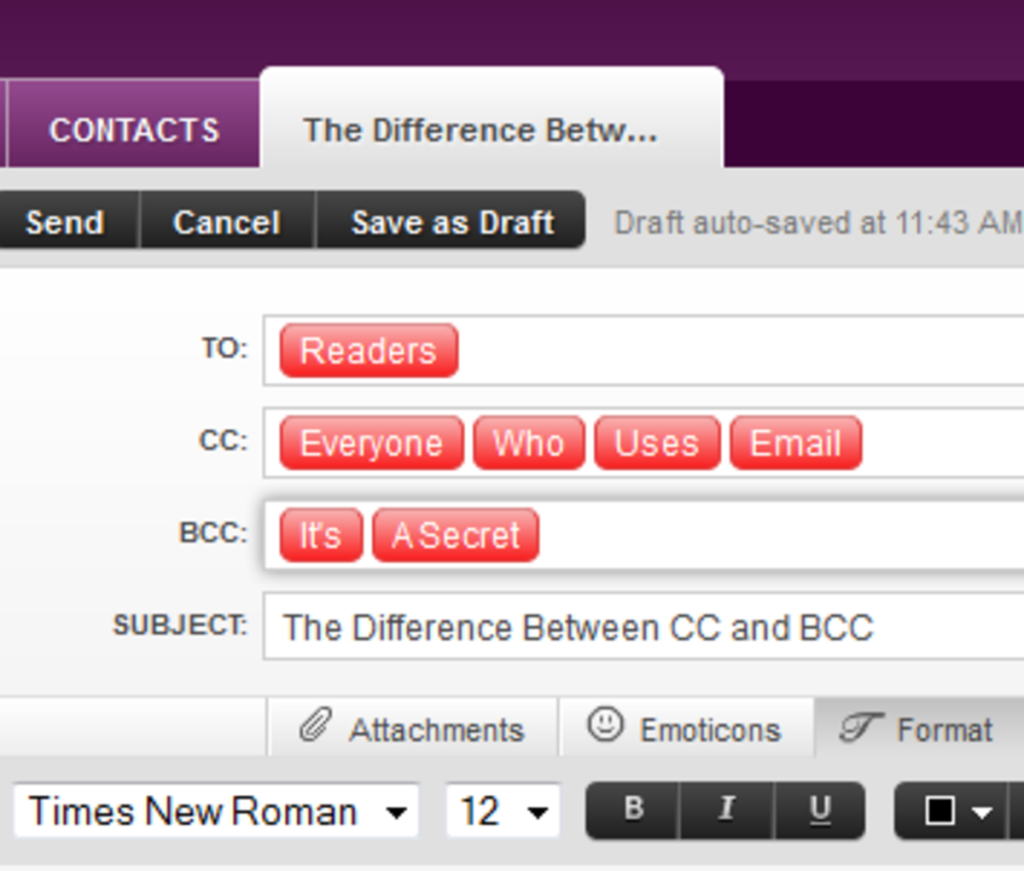When sending emails, it is important to understand the differences between CC and BCC recipients. Both CC (Carbon Copy) and BCC (Blind Carbon Copy) allow you to send a single email message to multiple people. The main difference between CC and BCC is that the recipient of an email sent with a CC will be able to see the email addresses of everyone else who was sent the message. BCC, on the other hand, keeps those addresses hidden from all recipients.
CC recipients are typically used when you want everyone in your email chain to know who else received the same message. This can be useful if you’re sending out an update or reminder to a group of people and want them all to be aware of each other’s presence in the conversation. You may also use it when sending out a mass email or newsletter so that readers can see who else received it—which may prompt some readers to forward it along.
On the other hand, BCC (Blind Carbon Copy) is useful when you want one or more people to receive your message without their email address beig visible by any of the other recipients. For example, if you’re sending out an invitation for a surprise party, you may want to include yourself in the “To:” field but list all guests in the BCC field so that their names are kept secret from each other until they arrive at the party.
The main thing to remember about BCC is that even though only one person sends out an email with multiple addresses listed in it, no recipient can view any of those addresses except for their own. That means if you’re on the receiving end of an email with someone else listed as a Bcc recipient, even if they reply-all or forward-all they won’t be able see anyone’s address except theirs—including yours!
So if privacy and discretion are important factors when sending out emails, using Bcc is your best bet. It allows you keep track of how many people were included in your message without having them see each other’s names or contact information—which can be especially useful when dealing with sensitive information like customer data or confidential conversations with colleagues.
Can BCC Recipients Be Seen by Others?
No, anyone who receives a message cannot see the Bcc recipients. Only the sender can view the Bcc recipients, by opening a sent message in their Sent Items folder. This folder is where all sent messages are stored by default.

Consequences of CC’ing Someone on a BCC
If you CC someone on an email that has been BCC’ed, the recipient will receive the message, but won’t be able to see the addresses listed in the BCC field. It is important to remember that when an email is forwarded, any addresses that have been placed in the To and CC fields will also be forwarded along with the message, but not those that have been placed in the BCC field.
Identifying Whether You Were BCC on an Email
Unfortunately, no, you cannot tell if you were BCC on an email. The BCC field is designed to hide the email addresses of those included in the field from all recipients of the message. This means that even if you are one of the recipients, you won’t be able to tell who was included in the BCC field. However, if you sent the email yourself, you can open it and view the BCC field to see who was included. Simply open your Sent mail folder and open the message to view who was included in the BCC field.
Is Business Communication Considered Unprofessional?
Yes, BCC is generally considered unprofessional to use in the workplace. BCC stands for “Blind Carbon Copy” and it allows you to send a message to multiple people without revealing who each of the recipients are. This can be deceptive and is not a transparent way of communicating with colleagues. It’s much better to use the CC (carbon copy) field instead, which will let everyone know who else received the email. This ensures that everyone involved is aware of each other’s involvement in the conversation and provides an opportunity for collaboration.
Conclusion
In conclusion, BCC recipients are a convenient way for senders to keep their message recipients confidential. While the message will still be received by the BCC recipient, they will not be able to view the addresses listed in the BCC field nor will they be included if the message is forwarded. This makes BCC recipients a secure and discreet way to send messages while keeping all of the intended recipients private.
